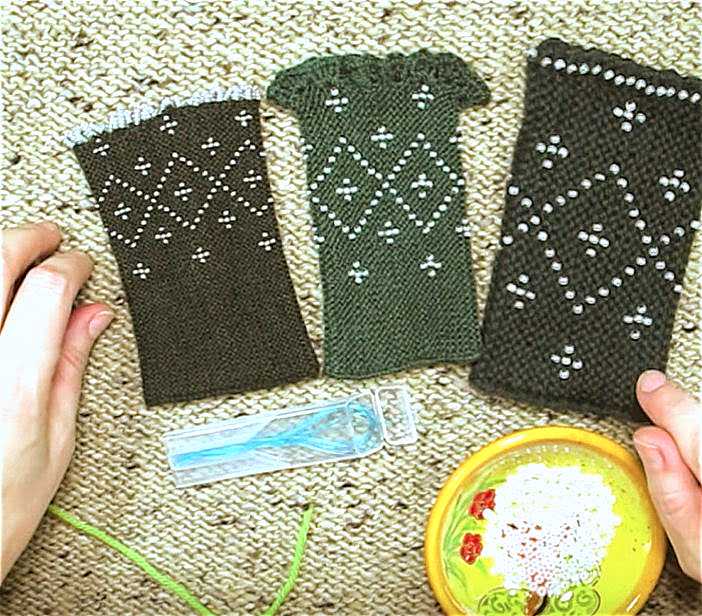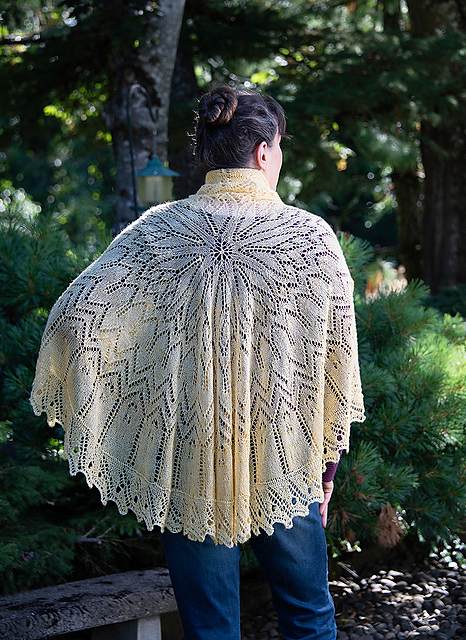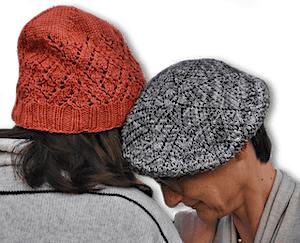Knitting
Sock Architecture
You know I love sock knitting and the details of construction techniques for heels and toes, right? Then it should not surprise you to learn that I am in love with a new book called Sock Architecture. This book by designer Lara Neel is a must-have resource for sock designers as well as intrepid sock knitters. If you know how to knit one kind of sock and you’re happy doing the same thing over and over again, then you may not need this book. But if you want to find out about different shapes of heels and toes–for both cuff-down and toe-up socks–and you like to experiment by putting different puzzle pieces together when you knit socks, then I have only one thing to say: Why haven’t you bought this book yet?
I’ve had the privilege to interview Lara and you can hear more about the book from her first hand. Enjoy!
DD: Can you give us the elevator pitch of what Sock Architecture is about and what we’ll find inside?
LN: Sock Architecture is about taking control of your sock knitting experience and tailoring your socks to get exactly what  you want. There are many toes and heels, all explained so that you can plug in your own numbers, and most of them can be made either toe up or top down. To round the book out, there are 17 patterns, most of which can also be made at any size, but that also have generously-sized stitch-by-stitch instructions so that you don’t have to start from scratch, if you don’t want to. There’s also a little history of socks, knitting, fashion, and some speculations on my part.
you want. There are many toes and heels, all explained so that you can plug in your own numbers, and most of them can be made either toe up or top down. To round the book out, there are 17 patterns, most of which can also be made at any size, but that also have generously-sized stitch-by-stitch instructions so that you don’t have to start from scratch, if you don’t want to. There’s also a little history of socks, knitting, fashion, and some speculations on my part.
DD: How did you decide which heel and toe techniques to include in the book? There are so many!
LN: The book started out as just a list. A friend of mine was frustrated at trying to find a heel that would fit one of her children perfectly and was having a hard time telling exactly how deep, in rounds, a certain heel would be to knit. I said I could draw up a chart of sock heels for her and help her figure out that depth, based on the number of total stitches in the sock. I started out with the French heel, square heel, several afterthought heels and a few variations on the Common heel. I did a lot of algebra and knit a bunch of little sample heels. I said, “maybe I will do a pamphlet about this.” She said, “I think it sounds like a book!”
I’ve always been interested in the history of knitting, so I went back to Richard Rutt’s A History of Hand Knitting and worked backwards from there. His library is online, so I started combing through those early knitting manuals. I kept reading the entire time I worked on the book, and actually found a few more heels than I could reasonably fit into one book. I’m starting notes for a second book right now.

In Weldon’s Practical Stocking Knitter from 1885, I found the Balbriggan heel, which is now one of my absolute favorites. It’s very fast and easy to work, and fits very well if you don’t have an extremely high arch. I also looked up Ethnic Socks & Stockings, by Priscilla Gibson-Roberts, to make sure I was getting the full benefit of a heel I remembered reading about years before that can only really be worked from the toe up (I tried it top-down, but it was far too difficult to be practical), the Joined Heel Flap.
Along the way, I finished some ideas I had been reaching for in my own heels. I developed a short-row heel that has no wraps and doesn’t gap at the turns. I love it because I can even work it in black yarn, in not-great light, and be confident that it will work out.
I also took the heels I created for my Tootsie socks in Knitty and the Touch of Silver AWE Socks I wrote for Crafty Living, which are different from each other but, I see in hindsight, are kind of working toward the same idea. I love the notion of taking a sock and working it in the way that is most convenient and fun at that moment. In those socks, and the two Procrastinatrix Socks (cuff-down and toe-up) patterns in Sock Architecture, you make the entire sock, including the gusset, before making the heel. You are free, then, to knit the sock either toe up or top down, and make the heel either toe up or top down. Since the heel is completely separate from the rest of the sock, if you ever want to pull it out and re-knit it, you can.
I’m interested in toes, too, and I tried to get a lot of variety in there. I tend to always make the same toes for myself and my wife, since we both have pretty wide feet. I designed sets of one shape of toe in the book–you can make them either short, medium or long depending on how your foot is shaped. When I first started making socks for Dee, a lot of times the toe was too narrow and that was very frustrating, so I wanted to give people options.
DD: Do you have a favorite? My favorites are the easiest ones so I can knit socks on a plane without a pattern. Currently my favorite heel and toe are both using techniques from Lithuania, and those are featured on my DVD with Interweave and will also be in my book Lithuanian Knitting: Continuing Traditions that will be coming out next year.

LN: I’m so excited to see your DVD and book! It’s strange, but my favorite is always whatever one I’m working on at the moment. If I don’t have a completely firm grasp on that particular heel and toe, I make a little note to myself with the numbers I need in my knitting bag. Right now, I’m working on a sock out of self-striping yarn that uses the afterthought Thumb-Joint Hat Top heel and toe. That’s a mouthful, but it’s a really simple concept. The heel/toe made it into the book, but I didn’t have room or time to make a pattern for it.
The advantage of that particular heel in a self-striping sock yarn is that, with a very small amount of stripe management, you can have a perfectly uniform set of stripes all of the way down the front of the sock. The heel is automatically custom-fit to the wearer and it’s much deeper than most afterthought heels, so it fits more like a standard flap-and-gusset sock. I really encourage anyone who hasn’t loved afterthought heels in the past to try that one and fall in love with it. One of my proudest moments in the last year has been when I convinced one of my friends to try it. Now, she’s an evangelist for that heel! For anyone looking for that self-striping pattern, keep an eye on math4knitters.blogspot.com and I’ll let you know when/where you can get it. I’m partnering with Simply Socks Yarn Company to release that pattern, so I don’t have the details yet, but I’ll share it on my blog when I do.
DD: Where do you stand on the “toe-up” versus “cuff-down” spectrum? I’ll go first again. I am a cuff-down sock knitter primarily, especially when I just want to CO and knit a pair of socks for myself. I work and design toe-up socks because they are fascinating historically and structurally and there are some incredibly interesting techniques for making toes as the first part of a sock.

LN: For a long, long time, I was strictly a toe-up sock knitter. I’m not 100% sure why, but I found that more intuitive. However, working on Sock Architecture made me much more comfortable with top-down construction, and I certainly don’t want to miss out on the few shapes of heels (like the Balbriggan) that can only be made easily from the top down. Now, I usually alternate between toe-up and top-down socks, unless I’m not confident about how much yarn I have. Then, I always knit from the toe up, and usually use an afterthought heel, as well. Then, I can usually work the top ribbing and, if needed, the heel, in another yarn.
DD: What’s the most common mistake sock knitters make, and how can it be avoided?
LN: I can’t speak for everyone, but I’ll share my early downfalls. 1) Making socks that don’t fit well. (Heartbreaking!!) 2) For toe-up socks, having a cast-off that is too tight. (Frustrating!) 3) For top-down socks, bad grafting at the toe. (Bummer, but at least almost no one will ever see it, until it wears through.)
Fixes:
1) Either work a gauge swatch or pretend that the whole sock is a gauge experiment/art project. More on that in answer to your question below.
2) Use Jeny’s Surprisingly Stretchy Bind-Off, or the best approximation of it you can remember. The sock police won’t come get you if you work your yo going the wrong way for that bind off. It will just look a little different.
3) Use my dental-floss trick, outlined in the book, and practice, practice, practice.
DD: Do you work gauge swatches when you knit socks? Or do you use the first few inches of the sock as a gauge swatch?
LN: I do work, cast off, wash, dry, and measure gauge swatches whenever a yarn/needle/stitch combination is new to me. I’m generally an extremely boring sock knitter. I like to buy my favorite sock yarns by the bag, and I’m almost always knitting for Dee, who has little feet. With some patterns, I can get up to 9 pairs of socks for her out of 600 grams of sock yarn. (NOT all in a row, I think I would be found curled up on the floor if I tried that.) I will work a gauge swatch for that first pair and take notes. If the sizing on it is perfect, I can cast on for all of the other eight pairs without checking gauge again as long as I’m using the same needles and the same stitch pattern. I will admit that I have a few pairs of socks, tucked away, where the sizing simply didn’t work. Yes, a whole pair, not just one sock. I guess my mom is right–I can be stubborn.
DD: Sock sizing is based on measurements and math, but it’s also a bit of an art. How can these two socks both fit me? (Rhetorical.) How can knitters be sure the socks they make will fit? (Real question.)
LN: It’s funny. Math4Knitters is my online nom de plume, so you would think I would never sweat about this. But even I still have a moment when I hold my breath when a new sock is finished. Until it is actually tried on, great fit hasn’t been proven, in my mind. If you are pretty sure about the circumference of the sock and just a little nervous about the length, find a way to leave the toe, the heel, or both to work last. Put the live stitches either on a very flexible circular needle or spare yarn, and try it on. Toes, in particular, are pretty easy to make a little shorter or longer.
You could also take a page from lace knitters and put in a lifeline right before you begin toe shaping on a top-down sock. If the toe turns out too long or too short, pull back to the lifeline and try again. From the toe up, you could do the same thing and install a lifeline a few rounds after toe shaping is finished. You would have to snip the yarn on the toe side and struggle a bit to get back on the needles, but that’s still a lot less work than starting all over again.
Unfortunately, if the circumference is way off, there’s just no saving that sock. Either find someone else to wear it or purchase some sock blockers and hang that sock on the wall as art. You made it. You should be proud that it will remain pristine and unworn. My good friend Chevas has a charming display of one-off socks hanging in her living room. Bonus: no second sock syndrome!
DD: Where can knitters find Sock Architecture? Can they order signed copies directly from you?
LN: The easiest place to get the most purchasing options for Sock Architecture is from Cooperative Press. It’s available there both as an ebook and a paper copy that includes an ebook. I would also be very grateful if you asked your local yarn store or book store to stock it, if they don’t have it already. Also, it should only take a few minutes to ask your local library to purchase a copy or two.
I didn’t anticipate the demand for signed copies, and I’m working on making signed bookplates for people who want them, so that people can have my signature no matter where they got the book. I do have a limited number of signed copies available on my Etsy site. The shop is under “laraneel.” Again, please keep an eye on math4knitters.blogspot.com for updates about bookplates.







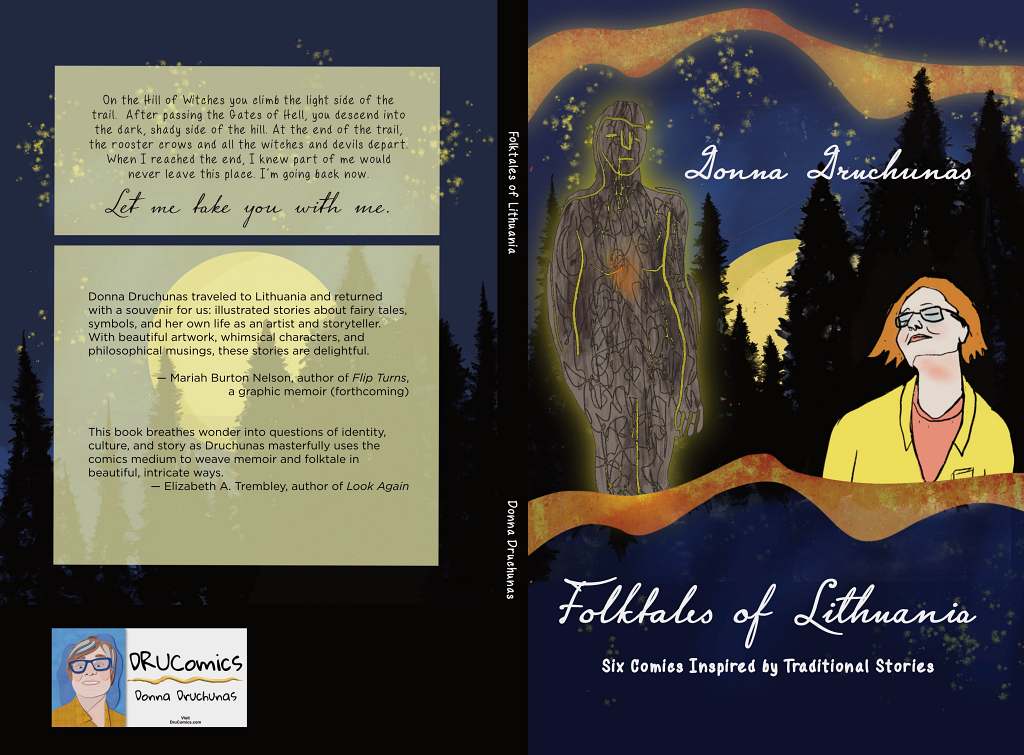


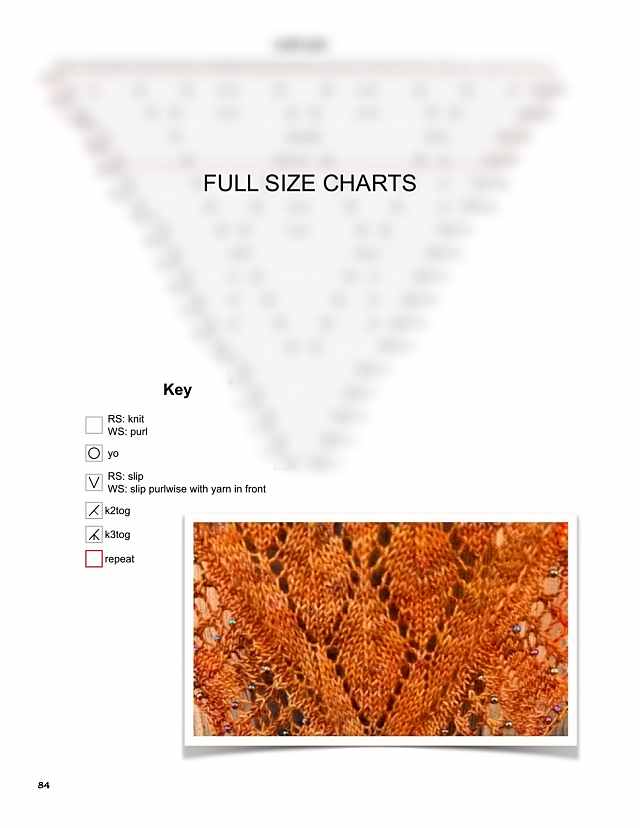




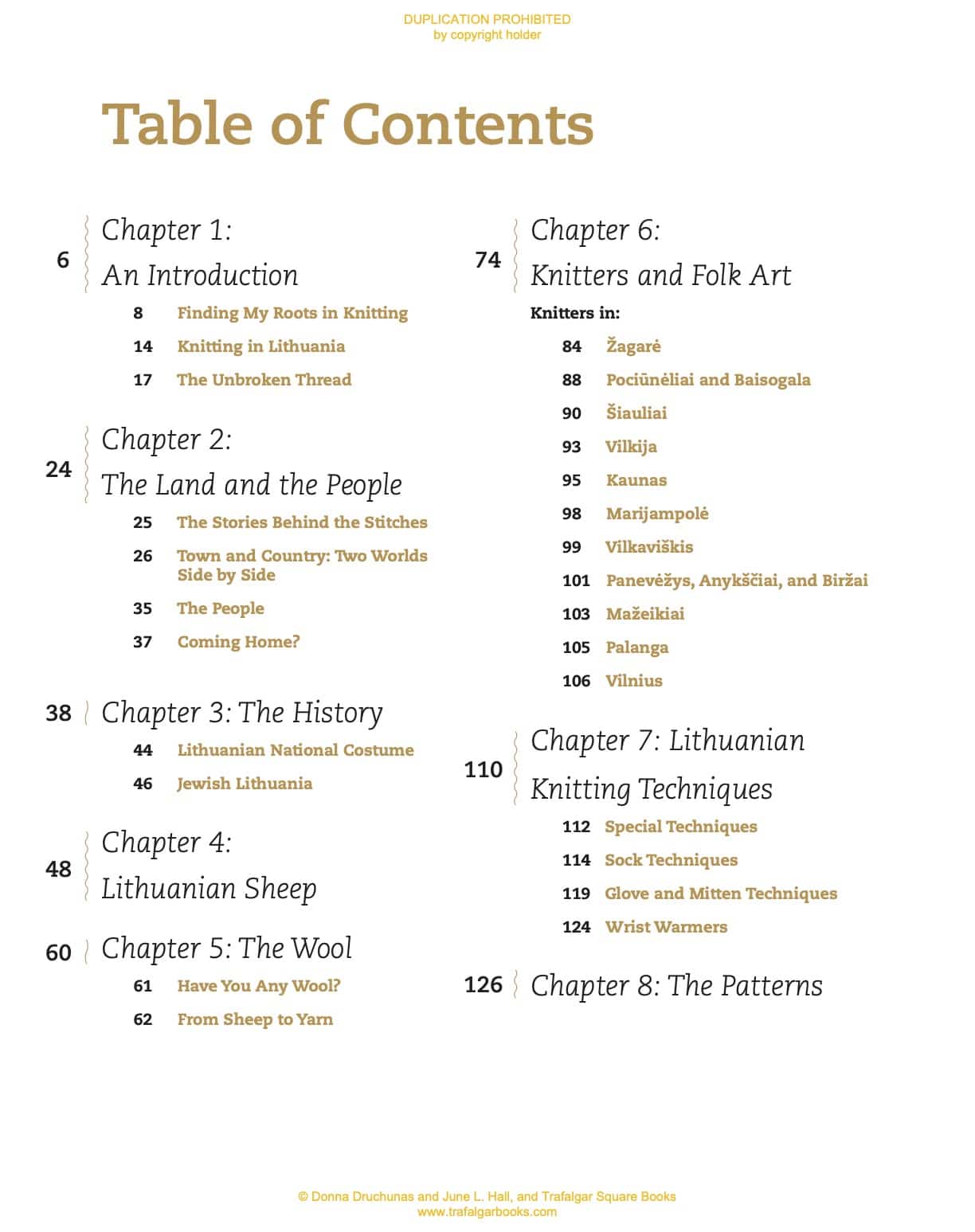


















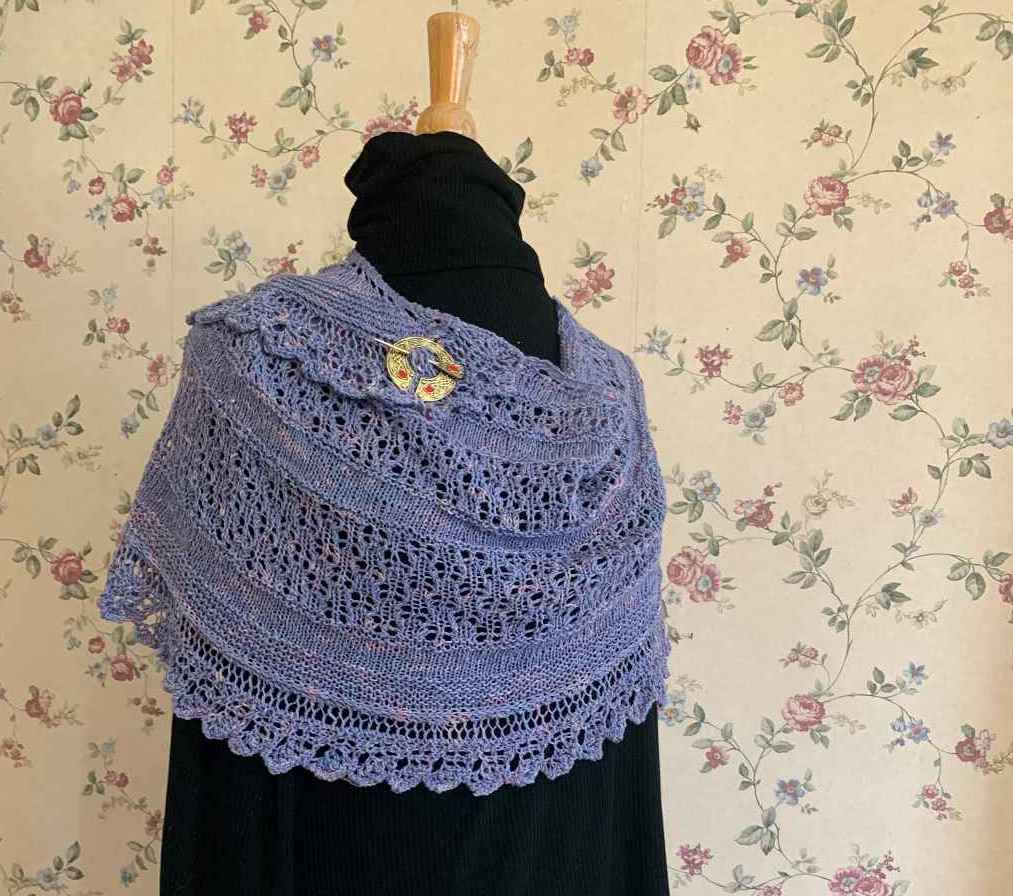







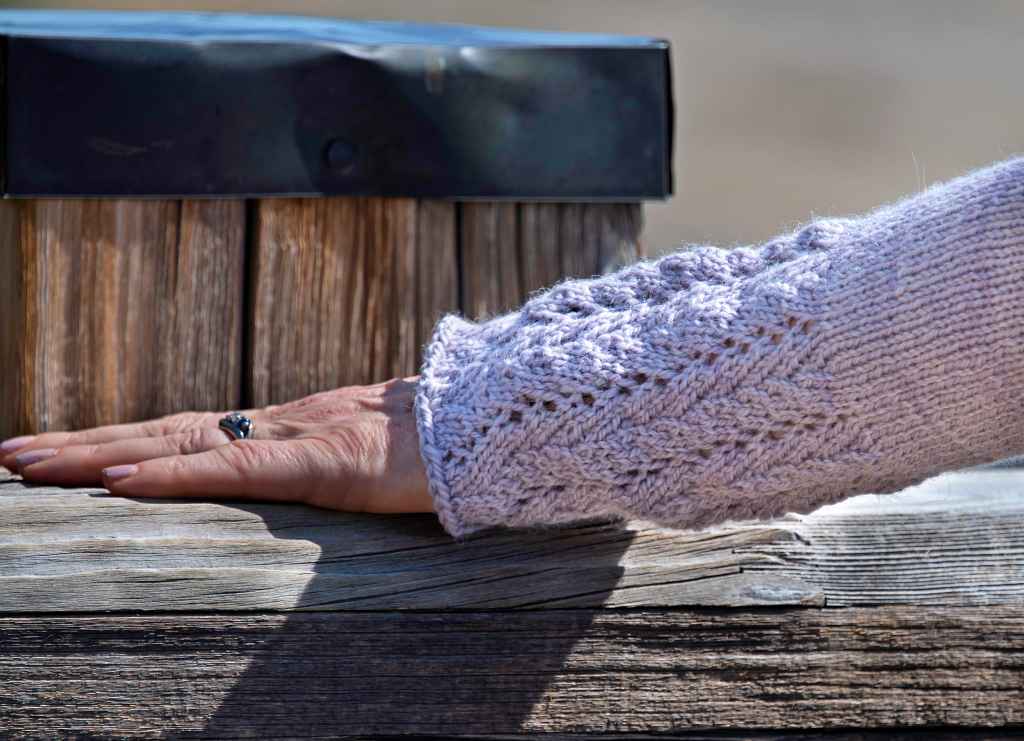










 Experience level – advanced beginner
Experience level – advanced beginner After I finished my Arctic Lace Knitting Book, I finally allowed myself to explore the world of lace knitting and discovered that is is much more varied and elaborate than I could have imagined. Around the world and over time, knitters in different countries and regions have developed unique styles of lace knitting that range from easy-intermediate (like the knitting of the Oomingmak knitters) to advanced-insanely- difficult (like some of the Victorian patterns designed by English knitters). Other lace styles are used in Estonia, Russia, South America, Lithuania, Germany and Austria, and New Zealand. I’m sure there are even more, but these are the styles I’ve explored so far. – Donna Druchunas –
After I finished my Arctic Lace Knitting Book, I finally allowed myself to explore the world of lace knitting and discovered that is is much more varied and elaborate than I could have imagined. Around the world and over time, knitters in different countries and regions have developed unique styles of lace knitting that range from easy-intermediate (like the knitting of the Oomingmak knitters) to advanced-insanely- difficult (like some of the Victorian patterns designed by English knitters). Other lace styles are used in Estonia, Russia, South America, Lithuania, Germany and Austria, and New Zealand. I’m sure there are even more, but these are the styles I’ve explored so far. – Donna Druchunas –



 Experience: All skill levels, basic knitting skills required.
Experience: All skill levels, basic knitting skills required. Have you ever wondered why some people can read charts easily and others find them incomprehensible? The truth is, charts are written in a code that can be deciphered by knitters who learn the symbols on the page and in their knitting. Charts do not use arbitrary symbols, but each symbol includes the instructions on how to make the indicated stitch! In this class, you will learn the secrets of interpreting chart symbols for texture and cable stitches.
Have you ever wondered why some people can read charts easily and others find them incomprehensible? The truth is, charts are written in a code that can be deciphered by knitters who learn the symbols on the page and in their knitting. Charts do not use arbitrary symbols, but each symbol includes the instructions on how to make the indicated stitch! In this class, you will learn the secrets of interpreting chart symbols for texture and cable stitches.





















 A mystery knit along (MKAL) is a type of knitting project in which a pattern is released in stages over a period of time, typically a few weeks or months. Each stage of the pattern is released at a specific date and time, and the final design is not revealed until the end of the project. This adds an element of surprise and excitement to the knitting process, as knitters do not know what the finished product will look like until it is complete.
A mystery knit along (MKAL) is a type of knitting project in which a pattern is released in stages over a period of time, typically a few weeks or months. Each stage of the pattern is released at a specific date and time, and the final design is not revealed until the end of the project. This adds an element of surprise and excitement to the knitting process, as knitters do not know what the finished product will look like until it is complete.






